Aptenia and its cultivation
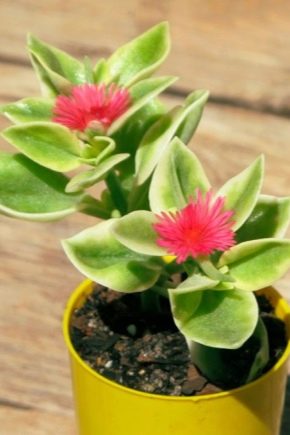
Aptenia is an exotic indoor flower that has gained great popularity among flower growers. It looks very beautiful and impressive both during its long flowering and after it.
Description
This houseplant is a succulent. It has long green stems that grow very vigorously. Thanks to this, the culture very quickly recovers from breakdowns. Aptenia stems are covered with small fleshy leaves. Their shape is heart-shaped, and their color is bright green.
In nature, the shoots of such plants can grow up to several meters. At home, flower growers usually cut them off. Therefore, the length remains within 20-40 centimeters.
This indoor flower begins to bloom in mid-spring. This process lasts until the very end of summer. It is for this plant that they are valued. It should be noted, however, that inflorescences do not always open completely. This happens only if the succulent is in a well-lit room. In winter, the plant gradually goes into a dormant state. For several cold months, the flower has time to gain strength.
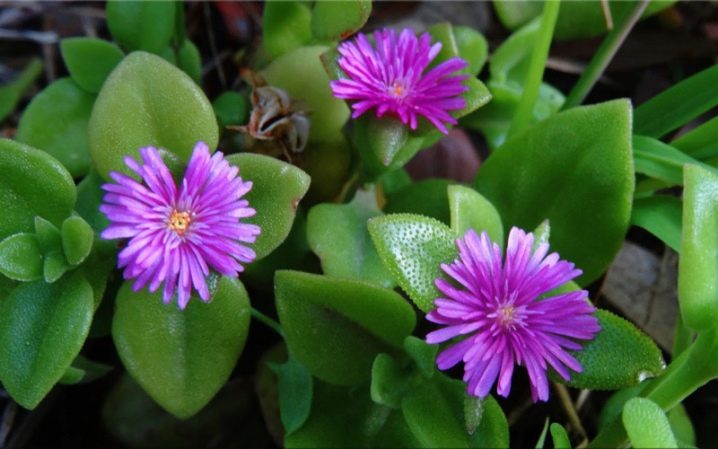
Types and varieties
There are now several main varieties of plants suitable for growing at home.
Heart-leaved
This is one of the most popular types of aptenia. This culture is growing very quickly. The bush becomes large and spreading in a short time. Its branches are fleshy, and the foliage is large and juicy. The latter is shaped like small hearts. It is because of this that the plant received such a name.
Flowers are located on stems at a short distance from each other. They are small but very beautiful. Their color can be either light pink or dark crimson.
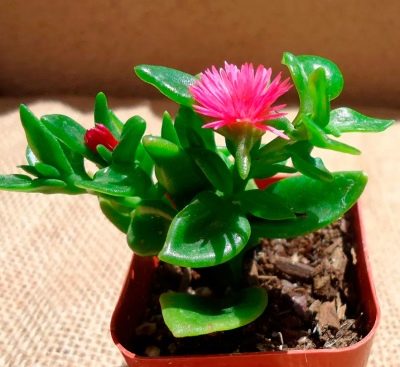
Variegated
This variety differs from others in smaller foliage and shorter shoots. The leaves of this aptenia are covered with small spots. Because of this, it is also often called variegated.
It is more difficult to care for such a flower than for its “congeners”. In addition, the plant is more likely to get sick.
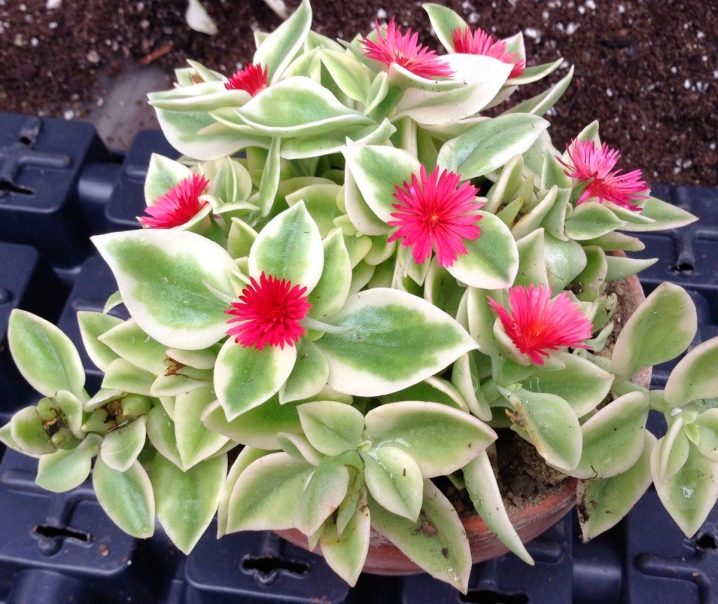
Lanceolate
This flower can be recognized by its small pink or lilac buds. Aptenia blooms until mid-October. The foliage of this plant is elongated. It is rough to the touch and dark green.
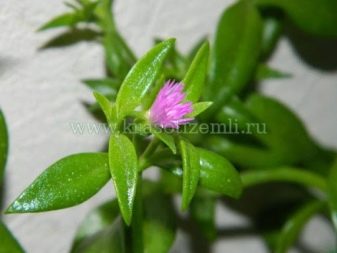
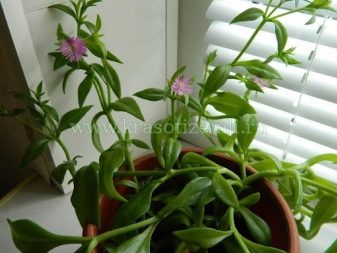
White-flowered
This is a rather rare type of aptenia. Her flowers do not attract much attention to themselves. But the shoots and foliage of the plant look beautiful at any time of the year.
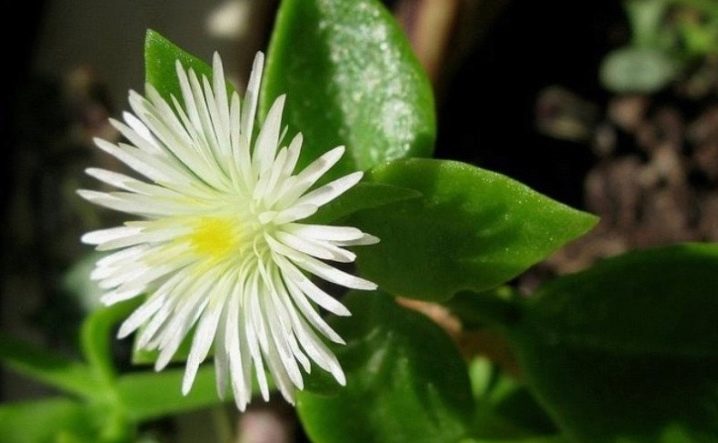
Landing nuances
For the plant to take root quickly and always feel good, the flowers must be planted correctly. During this process, pay attention to the following points.
- Pot volume. Tanks for planting aptenia should not be too large. Choose wide, but not very deep pots. It is best if they are made of clay. There should be a drain hole at the bottom of each container. In this case, the roots of the flowers will not rot. At the bottom of the selected container, a layer of expanded clay must be laid.
- Soil quality. The soil for planting is usually chosen as a universal one. Succulent soil can be found at most specialty stores. Before planting plants, a little lime is usually added to it. This helps to regulate its acidity.Instead of store-bought soil, you can use soil mixed at home. For its preparation, leaf and sod soil, as well as sand and peat, are added to the container. All these components are connected in equal parts. After mixing them, a little lime is also added to the container with soil. The soil is immediately watered with warm water.
The containers are not completely filled with soil. After that, seeds are sown in them. They can be placed both directly on the soil surface and in the grooves made with a toothpick.
Flowers that are sold in pots must be transplanted immediately after purchase. You need to act on the same principle as with the usual planting of aptenia. The pits for adult plants are made deeper.
It is important that the rhizome of the flower fits completely into the prepared hole.
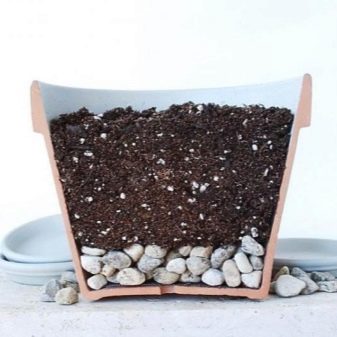
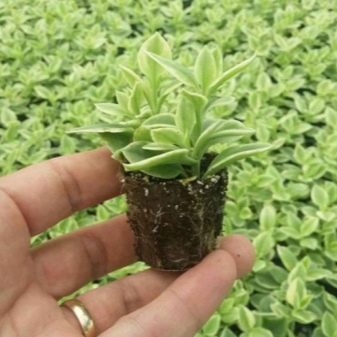
Care features
Growing aptenia usually does not cause any trouble for flower growers.
Conditions
At home, plants are usually grown in pots rather than outdoors. In the cold season, containers should be kept in a room with an air temperature of at least 10 degrees. In summer, it can rise up to 25 degrees. If the room gets too hot, the plant may wither.
In summer, containers with delicate flowers are often taken outside. They become a real decoration of balconies and terraces.
It is worth remembering that flowers do not react well to heat emanating from batteries and other heating devices.... Therefore, pots with aptenia should be located away from them. It is not recommended to place succulent pots in a draft. In this case, dark spots may appear on the surface of the foliage. Over time, they will only grow.
This flower is very picky about lighting. Therefore, flowers should always be placed on well-lit balconies or window sills.
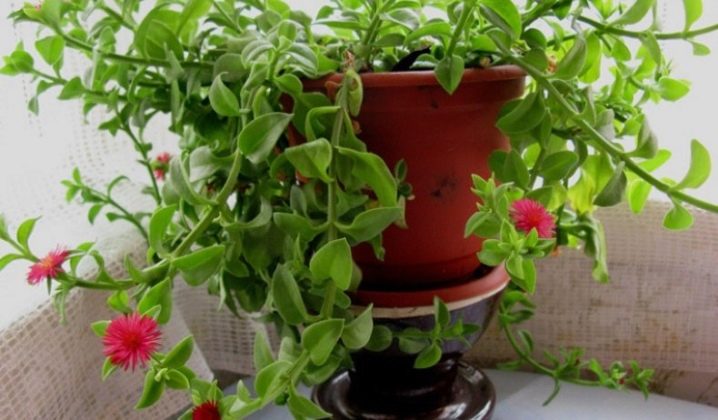
Spraying and watering
Indoor aptenia is a drought-resistant plant. Therefore, it may well survive the temporary lack of watering.... In the cold season, the flowers are irrigated about once a month. In the summer, this is done every 10-15 days. It is very important that the soil in the pot is not waterlogged. Water for irrigation should be used standing and not too cold. It is not necessary to use tap liquid.
There is no need to spray the plant, because air humidity does not affect it in any way. But next to the pot, you can place a container with water. In this case, the air in the room will always remain well humidified.

Top dressing
Houseplant is rarely fed. For normal growth and beautiful flowering, one application of nutrients every two to three years is enough for him. Usually the crop is fertilized in the middle of spring or summer.
For this purpose, universal formulations for succulents are suitable.... Instead, you can use mineral fertilizing with a minimum amount of nitrogen. It is recommended to apply them at the root.
Fertilizers must be used carefully. An excess of nutrients is bad for the health of plants.
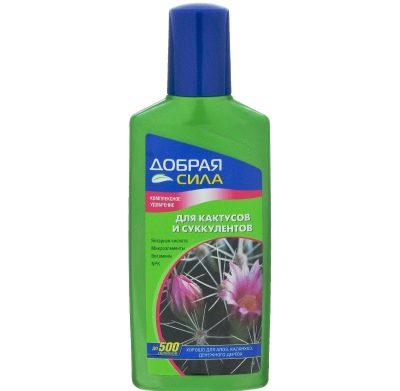
Transfer
Plants are rarely transplanted. Do this only if there is not enough space for the flower in the old pot.
It is recommended to transplant the flower in early spring. The soil in the pot is first sprayed with a spray bottle. After that, the plant is taken out of the container. The earth should remain on its roots. Next, a new pot is filled with nutritious soil.
A small depression is made in the ground. A flower is placed in it. It is important to do this carefully so as not to damage the roots of the plant. From above, the rhizome must be sprinkled with a light layer of fertile soil. You do not need to tamp it.
After transplanting, the flower must be watered with warm water.
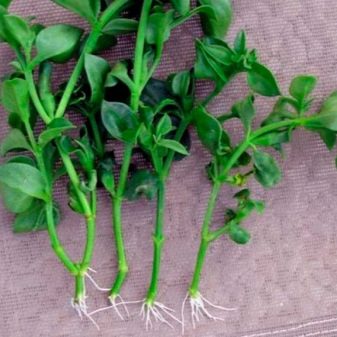
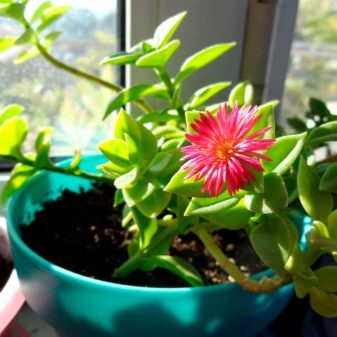
Pruning
An essential part of caring for your aptenia is to regularly prune your indoor flower. It is usually carried out in the fall, before the plant goes into a dormant state. You need to cut off the shoots with sharp scissors or a knife. Before work, the tools must be disinfected.Do not remove too many of the shoots.
You need to cut off old branches that interfere with your neighbors. Only in this case, the procedure will benefit the flower. Plants correctly cut from autumn bloom earlier than others next year.
If the bush sheds foliage during the dormant period, it is customary to cut the shoots in February. The pruning rules are the same in this case.
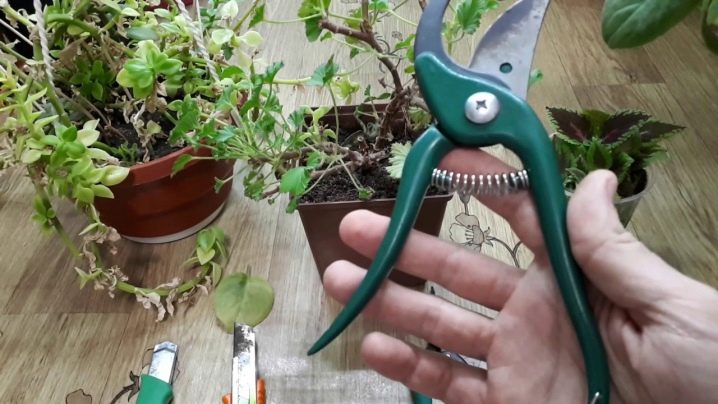
Reproduction
There are several main methods of breeding aptenia.
Seeds
It is quite simple to propagate an indoor flower by seeds. The main thing is to use fresh planting material. It is best to choose seeds harvested immediately after the aptenia finishes flowering.
They are sown in a container with loose soil. There is no need to bury it in the ground. Immediately after this, the plants are watered with warm water.
Potted seedlings appear fairly quickly. After the appearance of greenery, the container can be moved to a well-lit room. Watering is very important for young plants. But this must be done carefully so as not to erode the soil above the roots.
As soon as the seedlings grow up, they will need to dive. To do this, you should choose small pots with a diameter of about 6 centimeters. The containers are moved to a well-lit room. Water them at this stage daily. Once the plants are rooted and mature enough, they will need to be looked after as if they were adult flowers.

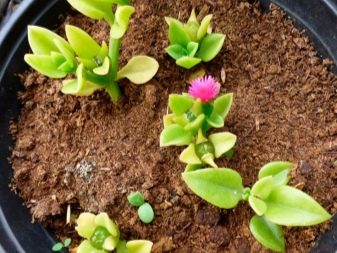
Cuttings
It is much more convenient to propagate flowers by cuttings. In the work, it is quite possible to use the parts of the plants left after pruning. If there is no planting material, cuttings are cut from the apical shoots.
After that, they can be rooted in containers with a nutrient substrate, vermiculite or wet sand. Instead, they can also be put in a container of water and activated charcoal for a couple of days.
When strong roots appear at the edges of green plants, they can be transplanted into separate containers. If done correctly, the plants will bloom within a couple of weeks after rooting.
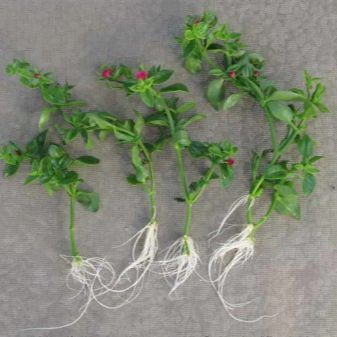
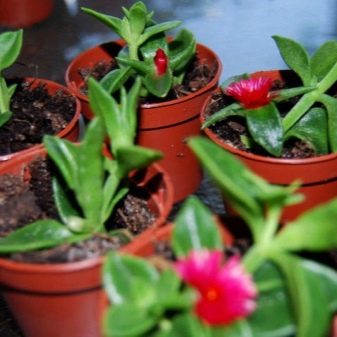
Diseases and pests
Indoor flowers are rarely attacked by pests. But, if you take the pots of plants outside, they can attract the attention of the following insects.
- Aphid... Small pests feed on flower sap. Therefore, it weakens very quickly. To combat them, sparing folk remedies are used. Flowers are simply sprayed with infusion of nightshade or marigold tops. The strong scent repels aphids.
- Mealybug. It is quite easy to notice traces of this pest's activity. White bloom appears on foliage and stems. Any tested insecticide can be used to control insects.
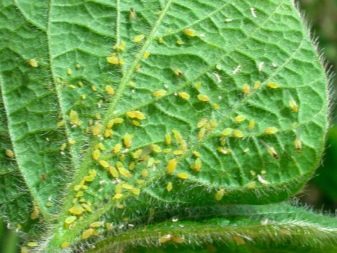
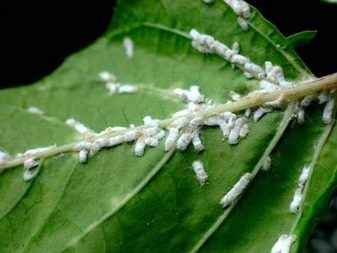
With improper care, flower growers also face the following problems.
- Falling foliage. This usually happens due to improper watering. Another reason for foliage to fall off can be a sharp rise in temperature during dormancy. To remedy this situation, the flowers need to be moved to a cooler location. Watering should be stopped for a while. Once the plant is relieved of stress, its appearance will improve.
- Lack of flowering. Many novice growers are faced with this problem. The lack of flowers on the stems can be caused by late pruning or insufficient lighting. In order for the plant to bloom in the spring, it is usually taken out to the balcony or placed on the windowsill in the southern part of the house.
- Rotting stems. The cause of stem rot is also usually the excess moisture in the soil. If the plants have already been severely weakened, one of the shoots must be separated from the main bush and transplanted into a new pot. In this case, if the old flower dies, a beautiful aptenia will still remain in the house.
- Deterioration in the appearance of foliage. If the leaves of the flower become weak and thin, the plant should also be moved to a brighter place. If the flower is already receiving enough light, excess fertilizer may cause a deterioration in its appearance.
This situation can be corrected by transplanting the plant into a new pot with a more suitable substrate.
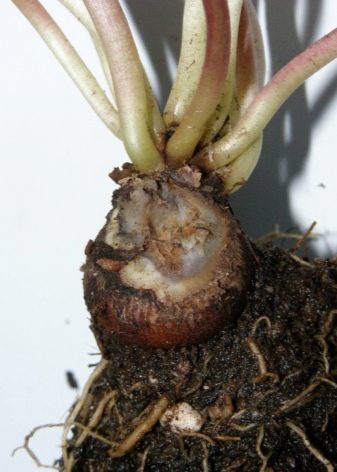
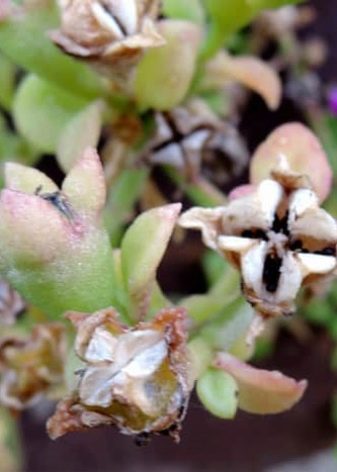
Having studied all this information, the florist can always keep his indoor flower in good condition.







































































































The comment was sent successfully.